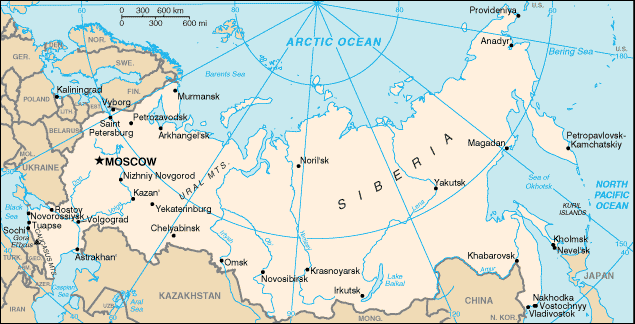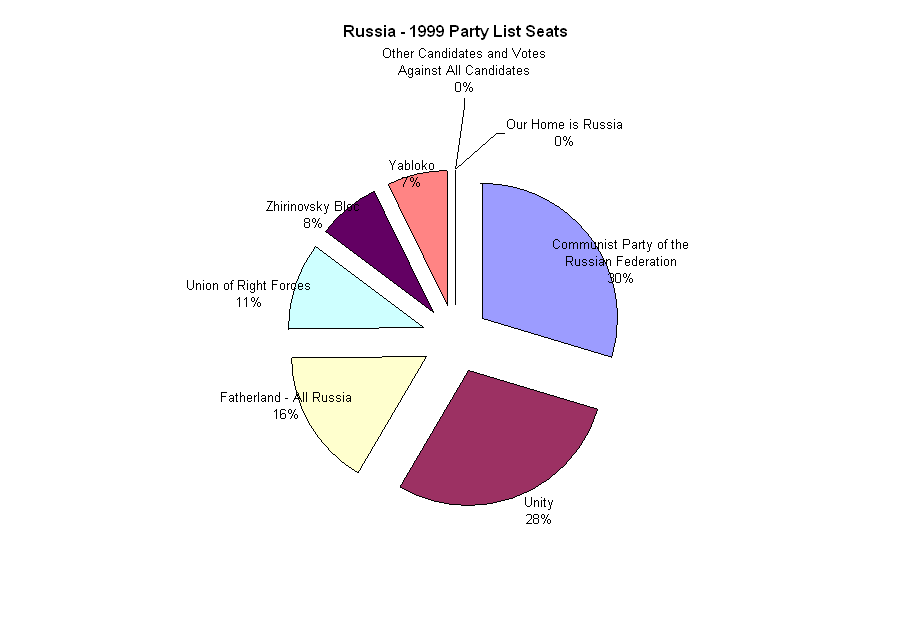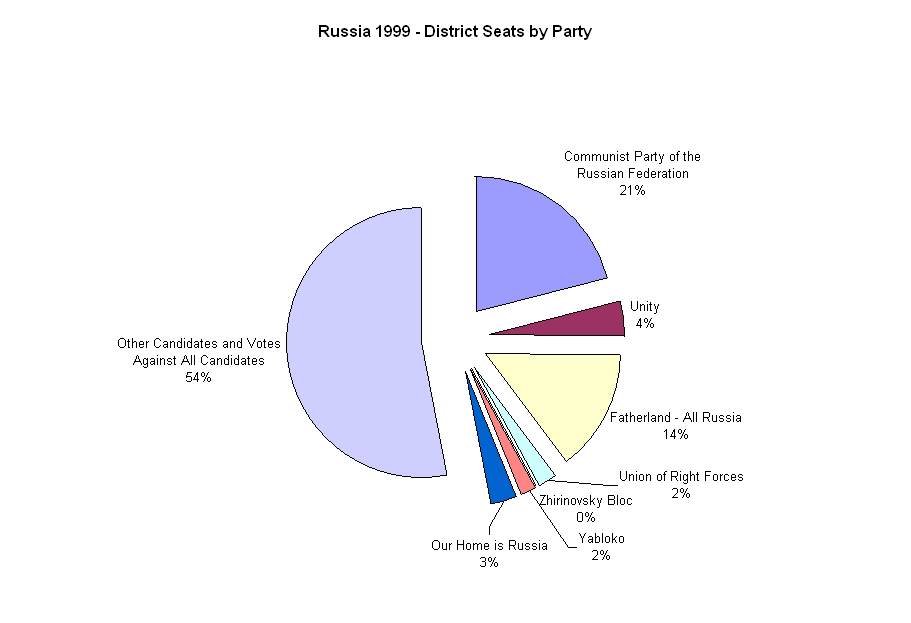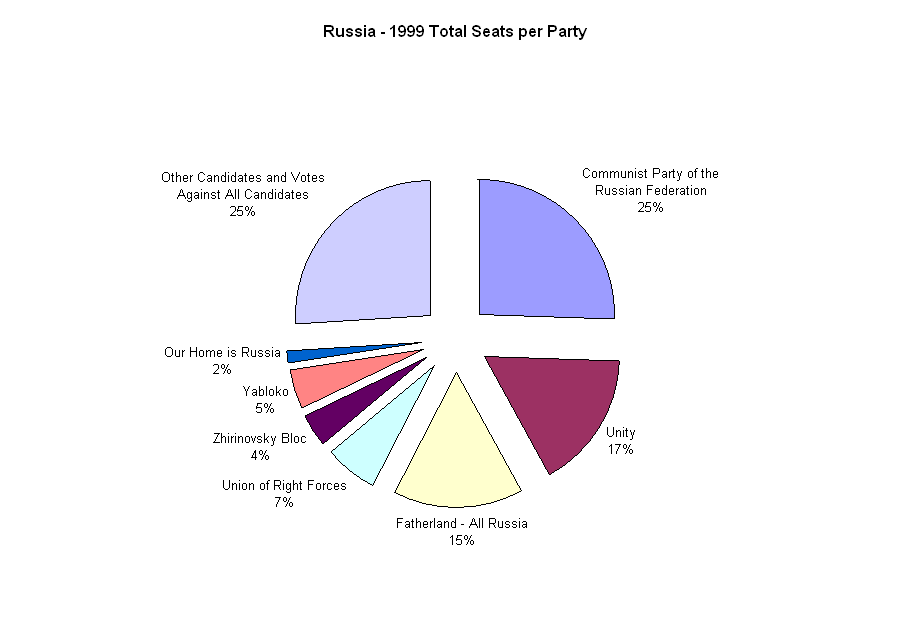

PLS 131 – Russia’s Politics
a. Mixed European/Asian cultural identity
b. Executive branch rarely restrained by legislatures
d. Strong state role – from patrimonialism to communism
f.
Abundant
natural resources – unrealized potential
g. Ambiguous future
II. Identity crisis
a. Russia established, centralized power unchecked
1.
Defense
of territory - constant peril since the origin
2. Expansion of territory an attempt to provide national security
3. Mobilization of national resources - centralized state required, overcome warring princes
4. Tyranny comes to be understood as the price of national defense
5. Limited "liberal" urges due to strength of autocracy, weakness of aristocracy (which depended on ruler's police assistance to quell peasant revolts and sustain inefficient farming operations
6.
Late end
of serfdom (1861)
7. Industrialization - state directed for defense purposes at end of 19th century, weak and state-dependent bourgeoisie
8. Liberal impulses - intelligentsia - channeled into "revolutionary" or conspiratorial acts
9. European identity for upper classes and revolutionaries alike, residual feelings of inferiority
10.
Early
20th century, loss in Russo-Japanese War results in crisis and belated and
half-hearted attempts to create a
11. Urbanization brings peasants to cities, large factories and urban densities make them prone to revolutionary appeals
12.
Non-Russian ethnic minorities in western Russia resented Russification policies
of tsarist regime
13. Regime crisis: WWI - highlights limits of partial industrialization, incompetence of state bureaucracy dominated by nobles, personal indecisiveness and autocratic tendencies of Tsar
b.
Modern Identity issues:
a.
Role of religion
– multi-religious federation (evangelical)
b. Role of ethnic nationalities – non-Russians
c.
Role of class
conflicts – equalitarian tradition conflicts with transition to
capitalism, growing income inequalities, limiting of social services, escalation
of housing prices, small pensions for retired, failures of many industrial
enterprises, emergence of "newly rich"
d. Geo-strategic projection – relations with NATO, EU, China, Asia.
e.
Political projection - liberal, democratic, semi-authoritarian?
e.
Economic dependency - What role for foreign capital, trade? Nationalist backlash?
III. Legitimacy Crisis – failure of liberalism, communism, post-communism
a.
End of WWI - two revolutions (1917)
b.
November - revolution overthrows liberal regime, institutes
revolutionary order
2. Uses slogan of "Land, Peace, Bread" as populist overture to working class/peasantry/military
3. Civil War (1918-21) - War Communism - heavy use of security, elimination of "loyal opposition," confiscation of food, etc.
e.
1924
Lenin dies - but basic elements of regime are visible
i. Single party rule - "vanguard party" - one class in control, one party in control
1. Dictatorship of the Proletariat
2. "Science" of Marxism as ideological glue
ii.
Democratic
Centralism
iii.
Economic
Policy (1921-28)
1. Repudiation of War Communism - "New Economic Policy"
a. reduces controls on peasantry and small business
b. Keeps commanding heights of industry in State hands, semi-market
c. Complex reasons for ending NEP
1. Stalin rise to power - impeded by challengers who were more closely linked to NEP (such as Bukharin)
2. Intrinsic hostility to peasantry and all elements of property owning classes
3. Faltering economic performance
4. Fear of rising opposition to Bolshevik rule abroad - need for quicker industrialization - provide military with tools of war
IV. Penetration Crisis - Stalinism, Post-Stalin - Soviet Industrialization
a. Stalinism (1928-1953)
1. Stalin gives up on any hope of European proletarian revolution - promotes idea of "socialism in one country"
2. Main features of economic policy:
a. complete state ownership of the means of production - end of NEP
b. End of partial markets, comprehensive state planning, autarky
c. Collectivization of all farms - rapid urbanization and growth of industrial working class
d. Emphasis on heavy industry over light
e. Use of threat of repression as main element of "labor discipline"
3. Moscow trials - reinforce idea that "no one is safe" and thus obedience is unconditional
4. Stalin's cult of personality
b. Post Stalin (1953-1985)
1. Stalin dies in 1953 - power struggle ensues
2. Khrushchev's "Secret Speech" to 20th Party conference - denounces Stalin's "excesses"
3. Changes in economic policy
a. Now with Eastern "sphere of influence" more collaboration
with Eastern Europe/China possible
(CMEA steered trade within sphere of influence)
b. Less reliance on terror, but overall results were decreasingly promising over time
c. Problems:
1. Bureaucratic controls excessive, impeded innovation and firm responsiveness
2. Emphasis on heavy industry created absence of consumer oriented "incentive goods"
3. Very large military spending impedes investment in other sectors such as agriculture
4. Very high environmental costs to industrialization
5. Slow to convert to computer age
6. Limited trade and general isolation impaired transference of new technologies and production methods
7. Population standard of living slow to rise, life expectancy declines
c. Gorbachev (1985-1991)
1. Perestroika
a. some decentralization of control, less bureaucratic planning
b. some openness to foreign trade, influences
c. Overall, state subsidies and control over commanding heights continues
without clear direction -
lower output, shortages, trade problems result
2. Glasnost
a. more contested elections, greater press freedom
b. foreign policy - reaches out to the West (questions of joining the IMF, World Bank, WTO/GATT emerge).
3. Internal tensions
a. 1991 - failed coup by pro-communist forces fails
b. Soviet Union falls apart, replaced by Commonwealth of Independent States (CIS)
d. Russia (post-Soviet period, 1991-)
1. Economic Policy
a. Privatization/shock therapy 1991 - end to price controls, subsidies
1. Fiscal restraint lacking as govt. tries to prevent social dislocations -
inflation, govt. incurs debt to pay off previous debt - 1998 bankruptcy
2. Sharp drop in real wages
3. Business failures, unemployment, unpaid salaries, capital flight, tax avoidance
4. Lots of insider deals when privatizing - managers scheme to keep control,
creates class of "newly rich" esp. in raw materials/finance
5. Agriculture, slow privatization, inefficiencies numerous, subsidies continue
6. Foreign investment increases, but lawlessness and "mafia" impair business climate, Europe and US give aid
7. Regions not always compliant to Moscow
2. Social Policy
a. Previous welfare state was generous - many subsidized goods/services, although shortages frequent and quality low
1. Free health care, education, child care, maternity leave, early retirement, small pensions
b. Now welfare state continues underfunded, but with sharper demands due to unemployment, higher costs, heavy burden on women
Russia's Politics - Governance and Policy-making
I. Major changes
a. Strong one party system to weak multi-party system
b. Strong executive
c. Federalism in flux
II. Strong one party system
a. CPSU - dominated by upper organs - Secretariat, Politburo, Central Committee
1. Dominated all state structures - provided policy oversight
2. Nomenklatura - top state posts filled by party members
b. Regular state structures - Supreme Soviet - had limited decision-making power
1. Party decisions more important than rule of law
a. judiciary not autonomous
III. Transition during Gorbachev
a. Introduces competitive elements into one-party elections - multiple candidates, enhanced role for legislature
b. 1990-1991 - power moves from Party to state hands; Yeltsin elected President
c. 1993 - New constitution adopted by referendum
Political Institutions of the Russian Federation,
1993 - 2003
(taken from page 453 in Kesselman)

IV. Current governing institutions
1. President:
a. Elected by direct election for 4 years, 2 term maximum, two-round election with run-off between two leaders if no one gains 50%
b. appoints Prime Minister
c. Has strong power to "decree" laws
1. state of emergency, martial law
2. grant pardons, call referendum
3. Suspend actions of other state organs if thought to be in violation of Constitution
d. can be impeached
2. Prime Minister
a. Chosen by President, but approved by Duma - appoints other officials within government (no Duma approval needed)
b. PM and govt. issue resolutions and directives, submit legislation to Duma
3. Federal Assembly
a. Bicameral
1. Duma - main house - elected 4 years, 450 seats, 1/2 PR (using the whole country as a district, 5% minimum) + 1/2 single member districts
a. electoral system results in odd relationship of votes to seats, due esp. to large # of small parties failing to gain min 5%.
b. Speaker - elected by the Duma, represents the largest party faction
2. Federation Council - one executive and one legislative rep. chosen from each of 89 regions, 178 seats
a. members appointed by the top executive and legislative officials in each of
the 89 federal administrative units -
oblasts, krays, republics, autonomous okrugs and oblasts, and the federal cities
of
Moscow and St. Petersburg; members serve four-year terms
V. Political Parties
a. Generalizations
1. Other than Communist Parties, parties have:
a. weak defined social basis
b. very limited party identification among voters
c. feature publicly visible "personalities" as their leaders
d. are of limited duration (come and go)
e. have limited presence in Duma
f. have uncertain ties to President
g. have limited party discipline
h. rarely offer clear base of support for Prime Minister
2. Ideological and programmatic basis for parties
a. These are fluid but can roughly be divided along these issues:
| Issues | Left | Center | Right | |||||||||||||||||||||||||||||||||||||||||||||||||||||||||||||||||||||||||||||||||||||||||||||||||||||||||||||||||
| Transition to capitalism | Go slow, retain strong role for state sector, subsidize weak firms, worry about welfare of poor, disabled, weak, unemployed | Move ahead with market reforms but prevent
"abuses" and avoid shocks when possible, include provisions for
welfare state
|
Shock therapy, quick privatization, sale of land, free market in prices, end state subsidies, fiscal discipline | |||||||||||||||||||||||||||||||||||||||||||||||||||||||||||||||||||||||||||||||||||||||||||||||||||||||||||||||||
| Democracy | Supports but with law and order | Supports but with "law and order" | Supports favors western style | |||||||||||||||||||||||||||||||||||||||||||||||||||||||||||||||||||||||||||||||||||||||||||||||||||||||||||||||||
| Foreign Policy | More nationalistic, might have preoccupation with former glory of Soviet Union (Zhirinovsky), support operations in Chechyna, oppose expansion of NATO, etc | Flexible on NATO, not esp. concerned to resurrect Soviet power, but agrees with operations in Chechyna and need for strong military (but concerned with costs of sustaining it) |
Opposes resurrection of Soviet power, opposes operations in Chechyna, less concerned about NATO, create favorable trading relations within CIS and outside | |||||||||||||||||||||||||||||||||||||||||||||||||||||||||||||||||||||||||||||||||||||||||||||||||||||||||||||||||
| Summary of Recent Russian
Elections
Executive:
Source: www.rferl.org/Central
Election Commission (TsIK)
Source: Parties and Elections Main political parties:
Questions to consider: 1. Regimes have changed in Russia - but does that mean that "political development" has occurred? 2. Can the regime be successful as a democracy without a strong party system? Have we examined any countries with weak party systems that have managed to survive as democracies? 3. What will be the form of evolution of the Russian regime? Will it move more in the French direction or semi-presidentialism, or will it gravitate to the US model of presidentialism? 4. What will Russia's social and economic model look like in ten or twenty years? How will its 70 years of socialism impact its movement towards capitalism or a mixed economy? Will short-term difficulties cause so much social distress that a backlash might occur? What would such a backlash accomplish? How will globalization impact Russia? 5. How will the forces of nationalism and a sense of lost empire impact the foreign and domestic policies of the country?
|
||||||||||||||||||||||||||||||||||||||||||||||||||||||||||||||||||||||||||||||||||||||||||||||||||||||||||||||||||||
| RUSSIA: December 19, 1999, Duma Election (next election 2003) | |||||
|
Registered Voters: Votes Cast: Valid Votes: Invalid Votes: |
108,072,348 65,370,655 65,240,663 129,992 |
[60.49% of Registered Voters] [99.80% of Votes Cast] [.20% of Votes Cast] |
|||
|
Half of the 450 seats
are filled by direct elections in constituencies while the remaining 225
are filled from party lists according to each party's share of the
popular vote. The number of votes reflects the amount each party
received under party list voting.
|
|||||
| PARTY | PARTY LIST VOTES | PARTY LIST SEATS | %[OF PARTY LIST VOTES] | DISTRICT SEATS | TOTAL SEATS |
| Communist Party of the Russian Federation (anti-market) | 16,195,569 | 67 | 24.29% | 46 | 113 |
| Unity (a Yeltsin product, closest to Putin) | 15,548,707 | 64 | 23.32% | 9 | 73 |
| Fatherland - All Russia (coalition formed by Mayors of Moscow and St. Petersburg - centrist, hawkish on foreign affairs)) | 8,886,697 | 37 | 13.33% | 31 | 68 |
| Union of Right Forces (pro-market, supported Putin) | 5,676,982 | 24 | 8.52% | 5 | 29 |
| Zhirinovsky Bloc (nationalist) | 3,989,932 | 17 | 5.98% | 0 | 17 |
| Yabloko (pro-market, social democratic, dovish on foreign affairs) | 3,955,457 | 16 | 5.93% | 4 | 20 |
| Our Home is Russia (former Yeltsin creation, out of favor...) | 791,160 | 0 | 1.19% | 7 | 7 |
| Other Candidates and Votes Against All Candidates | 10,196,159 | 0 | 15.69% | 115 | 115 |


